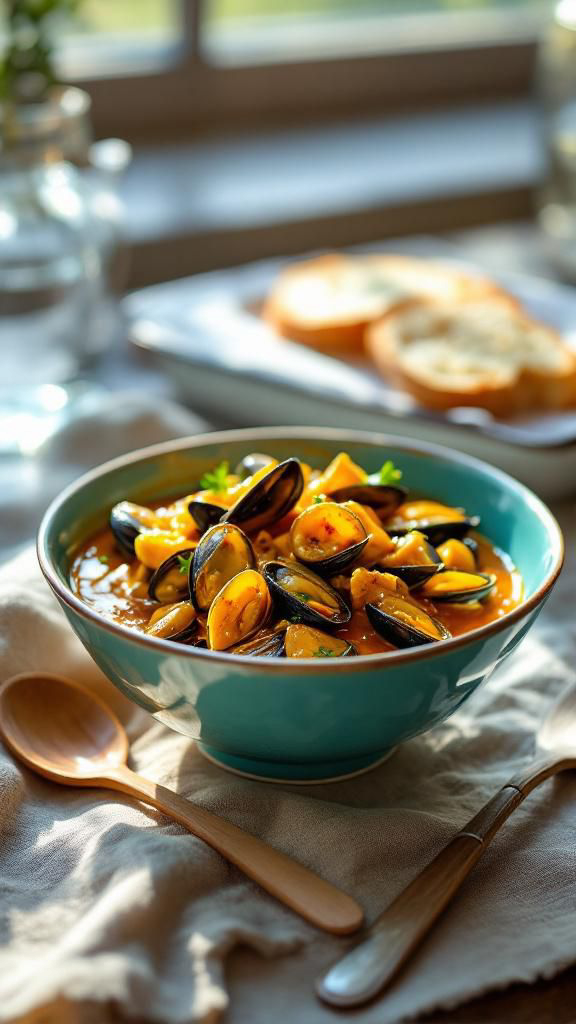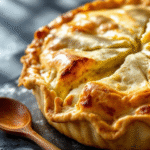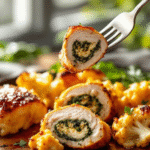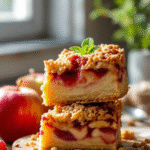I. Introduction
Mary Berry needs little introduction to British cooks. With over 70 cookbooks to her name – including well-thumbed favourites like Mary Berry’s Baking Bible – and years as the warm-hearted judge on The Great British Bake Off, she’s shaped how generations of us cook. Trained at Paris’s famous Le Cordon Bleu school, Mary’s recipes always favour quality ingredients and straightforward methods. Her Curried Cockles dish is a lesser-known treasure: a soothing blend of plump seafood and gentle spice that speaks of Britain’s coastline. Below, we’ll walk through its backstory, Mary’s personal touches, clear cooking steps, vegan options, and nutrition facts – all presented with the care you’d expect from a CBE honoured by the Guild of Food Writers.
II. Mary’s Touch & The Dish’s Past
Mary’s cooking shines by keeping things simple but just right. For these cockles, she insists on fresh, sustainably caught shellfish – never tinned – to let their natural sweetness come through. Cockles have long been part of Britain’s food story. Coastal communities in Wales and Scotland have gathered them since Roman times, and by the 1800s, “cockle women” sold them at markets like London’s Billingsgate. Curry spices arrived through Britain’s colonial history, and by the 1940s, home cooks often used them to pep up local seafood.
Mary’s version, perfected during her AGA cooking classes, honours tradition while adding thoughtful tweaks. She chooses crème fraîche over heavy cream (giving a pleasant tang), uses a mild curry powder (so the spice doesn’t overwhelm), and finishes with fresh parsley – her signature touch for freshness. As food historian Dr. Annie Gray puts it: “This dish shows classic British make-do: global flavours meeting what’s on our doorstep” (from her book British Food: A History, 2020).
III. What You’ll Need
Good ingredients matter: Seek out fresh cockles (ask your fishmonger for ones dug within the day). Use full-fat crème fraîche for richness.
(Serves 4)
Ingredients List:
- 1kg fresh cockles in shells (soak 1 hour in salted water, then scrub)
- 2 tbsp unsalted butter (Mary often uses Kerrygold)
- 1 large onion, finely chopped (white or yellow)
- 2 garlic cloves, minced
- 1 tbsp mild curry powder (like Rajah or Bolst’s)
- 200ml dry white wine (a Sauvignon Blanc works)
- 150g full-fat crème fraîche (at room temperature)
- 2 tbsp fresh parsley, chopped (flat-leaf tastes best)
- Salt and black pepper to taste
Kitchen Tools:
- Large saucepan with lid
- Slotted spoon
- Fine sieve
- Mixing bowl
IV. Cooking Steps
Clean the Cockles:
Soak cockles in cold salted water (1 tbsp salt per litre) for 1 hour. Scrub shells well. Rinse under running water 3 times until no grit remains. Drain.
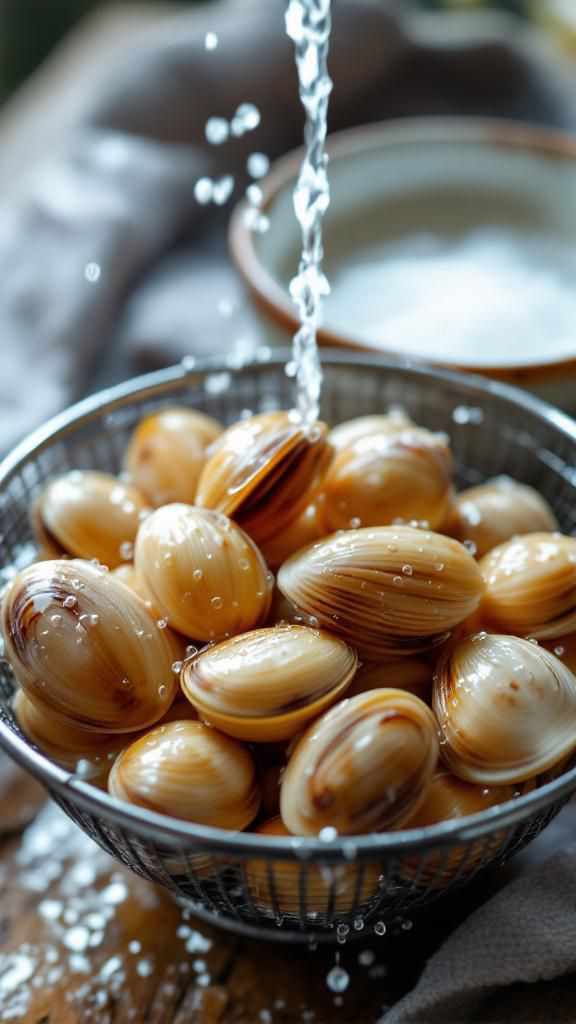
Cook Onions and Spices:
Melt butter over medium heat. Cook onion for 5 minutes until soft. Stir in garlic and curry powder; cook 1 minute until it smells fragrant.
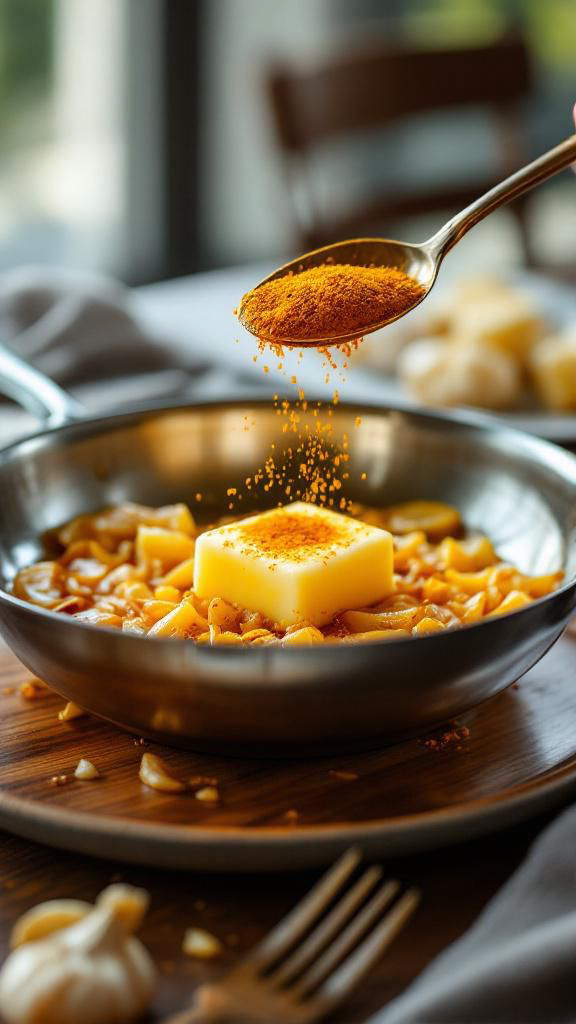
Steam Open Shells:
Tip in cockles and wine. Cover tightly. Steam 4-5 minutes until shells open (throw away any that stay shut).
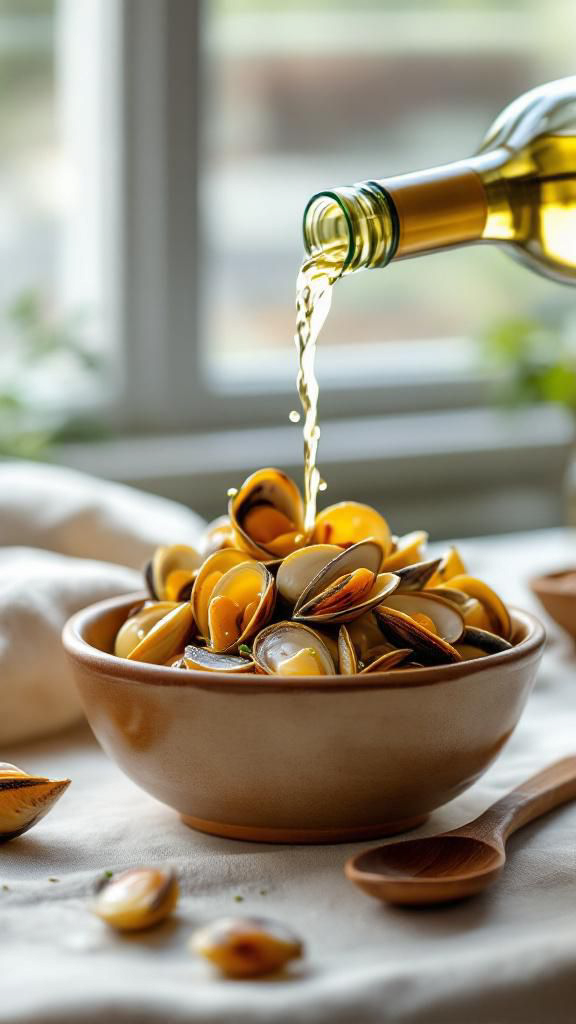
Strain the Liquid:
Remove cockles with spoon. Pour broth through sieve; keep 100ml.
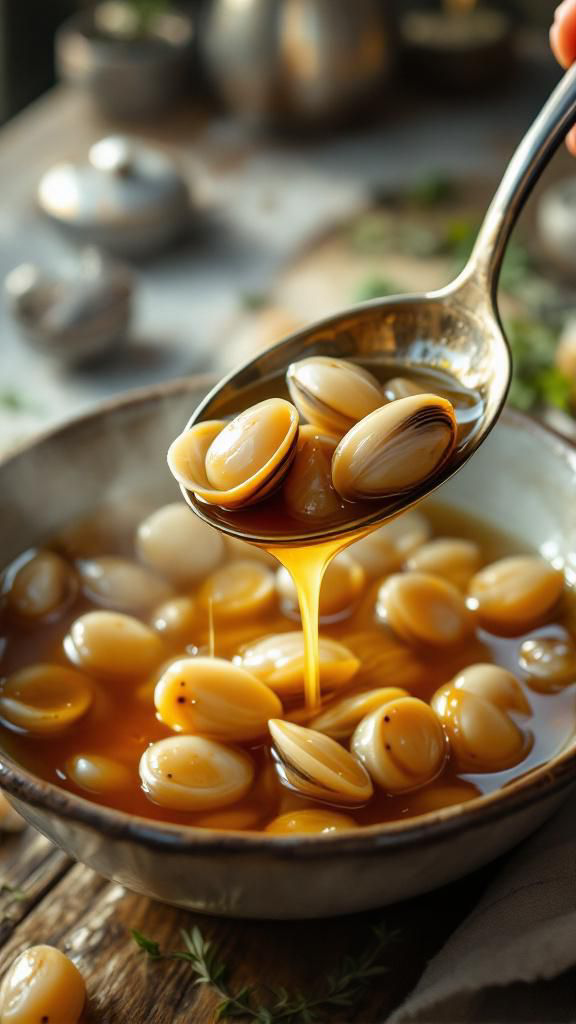
Get the Meat Out:
Discard shells. Put meat in a bowl; cover to keep warm.
Thicken the Sauce:
Return saved broth to pan. Boil 3 minutes until reduced by half.
Finish the Sauce:
Turn heat low. Stir in crème fraîche, parsley, salt, and pepper. Don’t let it boil.
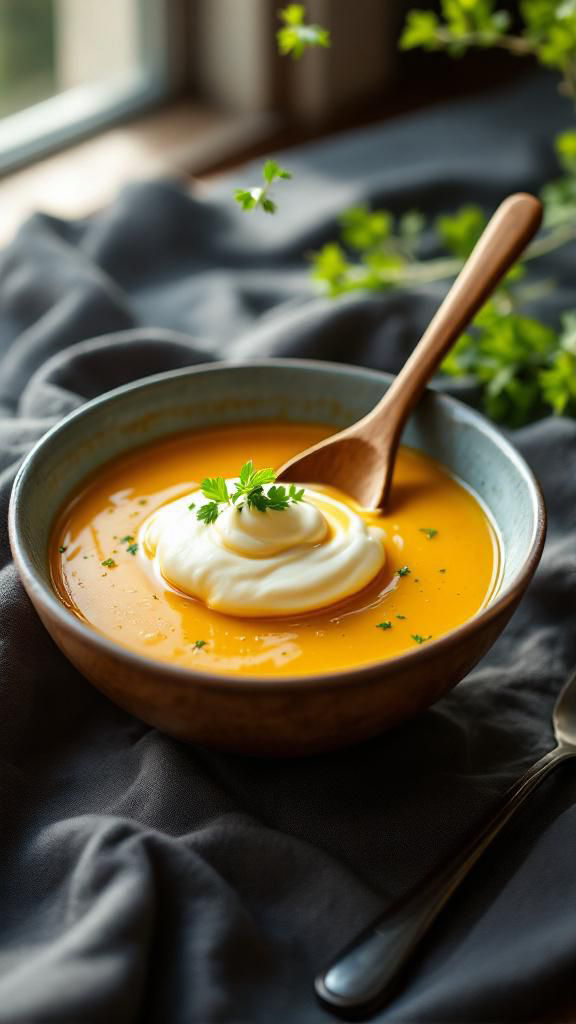
Bring Together:
Gently fold cockles into sauce. Warm through. Serve with crusty bread.
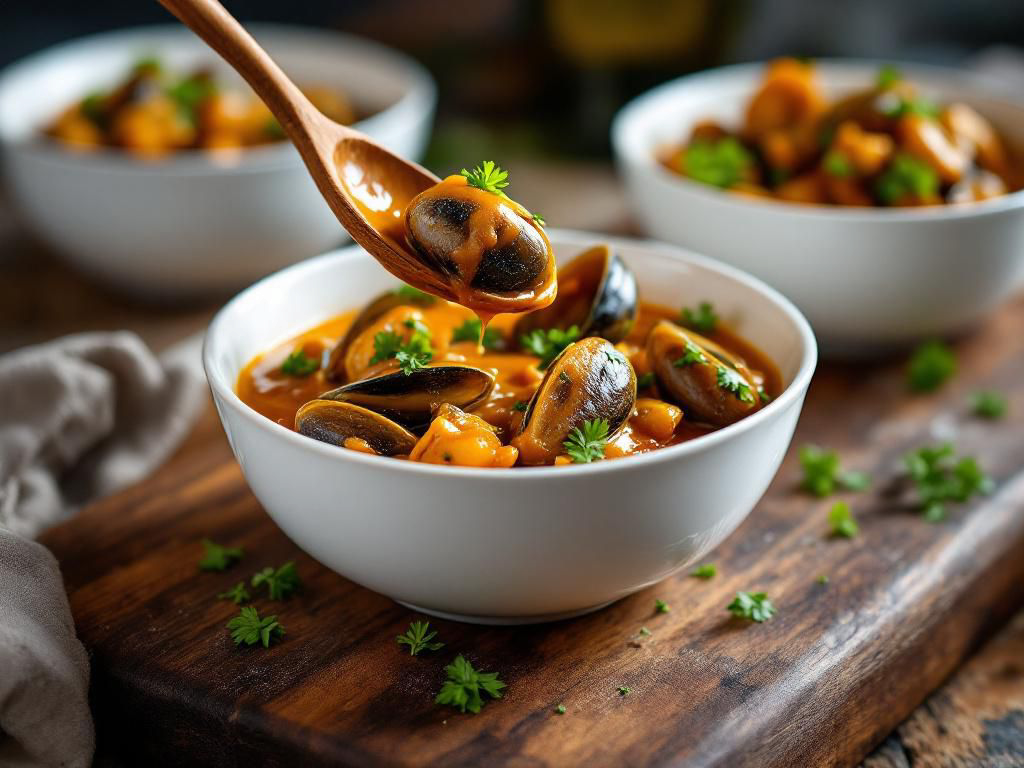
V. Taste & Nutrition
Flavour: Sweet-sea taste of cockles balanced by warm spice. Sauce is rich but lifted by wine and parsley.
Feel: Tender shellfish, smooth sauce.
Smell: Sea air with spice and herbs.
Per Serving (Based on NHS data):
- Calories: 310
- Protein: 22g (good for muscles)
- Fat: 18g (11g saturated)
- Carbs: 8g
- Iron: 12mg (over half your daily need)
- Also provides selenium, vitamin B12, and omega-3s.
VI. Get It Right Every Time
- Stubborn shells? Heat might be too low. Steam should be vigorous. Bin any that won’t open.
- Sauce too thin? Simmer longer before adding crème fraîche. Too thick? Mix in reserved broth.
- More flavour? Lightly toast curry powder in a dry pan 30 seconds first.
- Changes: Fry diced bacon with onions, or swap parsley for fresh coriander.
VII. Vegan Version
Replace cockles with 400g torn king oyster mushrooms, butter with olive oil, and crème fraîche with coconut cream. Fry mushrooms until golden before adding curry powder. Use vegetable stock instead of wine. Top with chopped chives.
VIII. Serving Ideas
Goes well with: Crusty sourdough, steamed samphire greens, or plain basmati rice.
Other Twists:
- Thai-style: Add lemongrass stalk and kaffir lime leaves while simmering.
- Turn into pie: Put mix in dish, top with puff pastry, bake 20 mins at 200°C (400°F).
IX. Keeping Leftovers
Store cooled cockles and sauce separately in sealed containers for up to 1 day. Reheat gently in pan with a splash of water; microwaving makes cockles rubbery.
X. Common Questions
Q: Can I use frozen cockles?
A: Fresh is ideal. If using frozen, thaw overnight in fridge. Pat dry before cooking.
Q: Must I use curry powder?
A: It’s key to the dish. Mild garam masala or korma powder work if needed.
Q: How do I clean cockles properly?
A: Soaking gets rid of sand. Rinse well under cold tap. Discard broken shells.
XI. Final Word
Mary Berry’s Curried Cockles is British seaside cooking at its best – simple, satisfying, and full of flavour. Share your results with us! Tag #BerryCockles on Instagram. Fancy another Mary classic?



